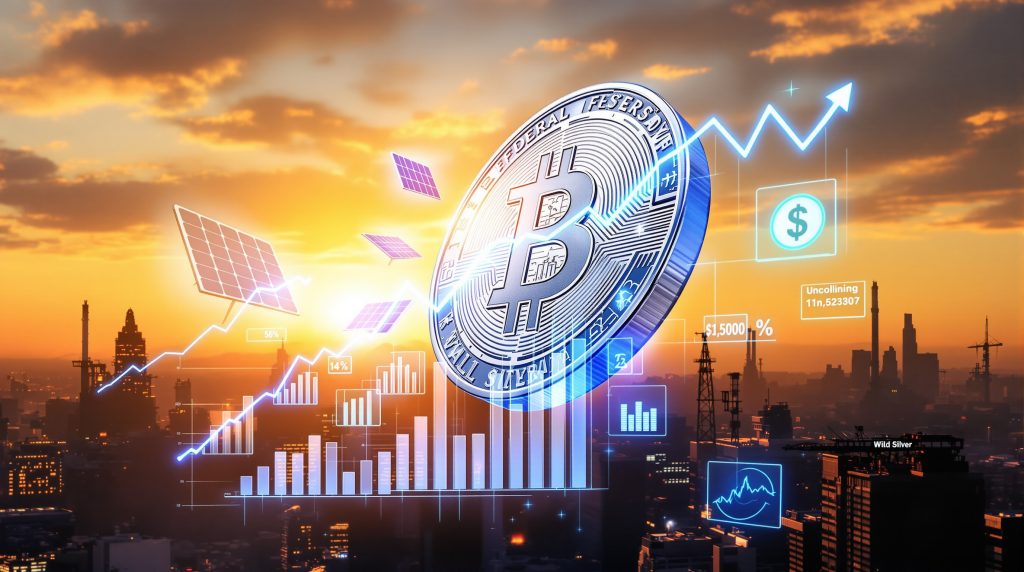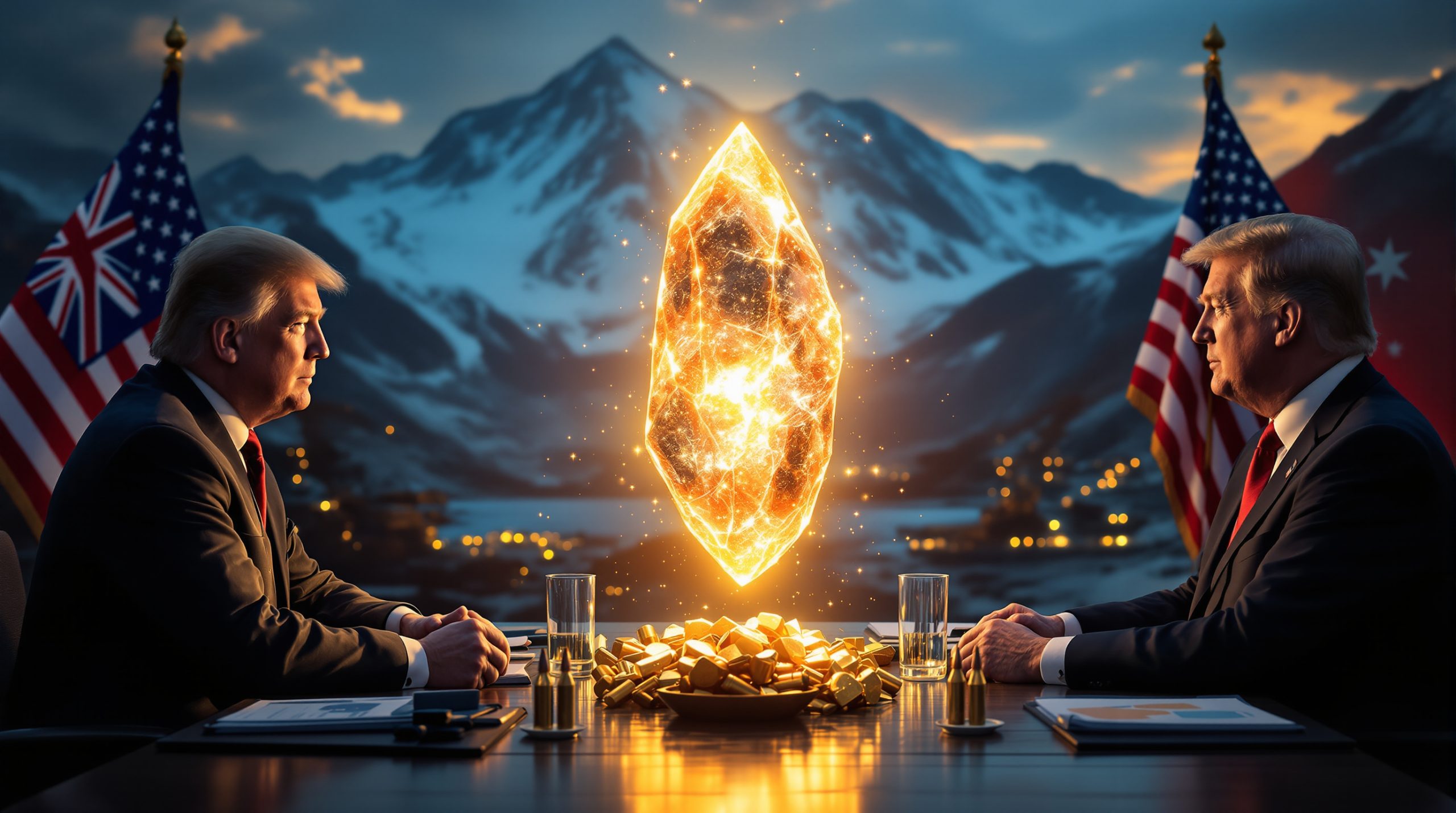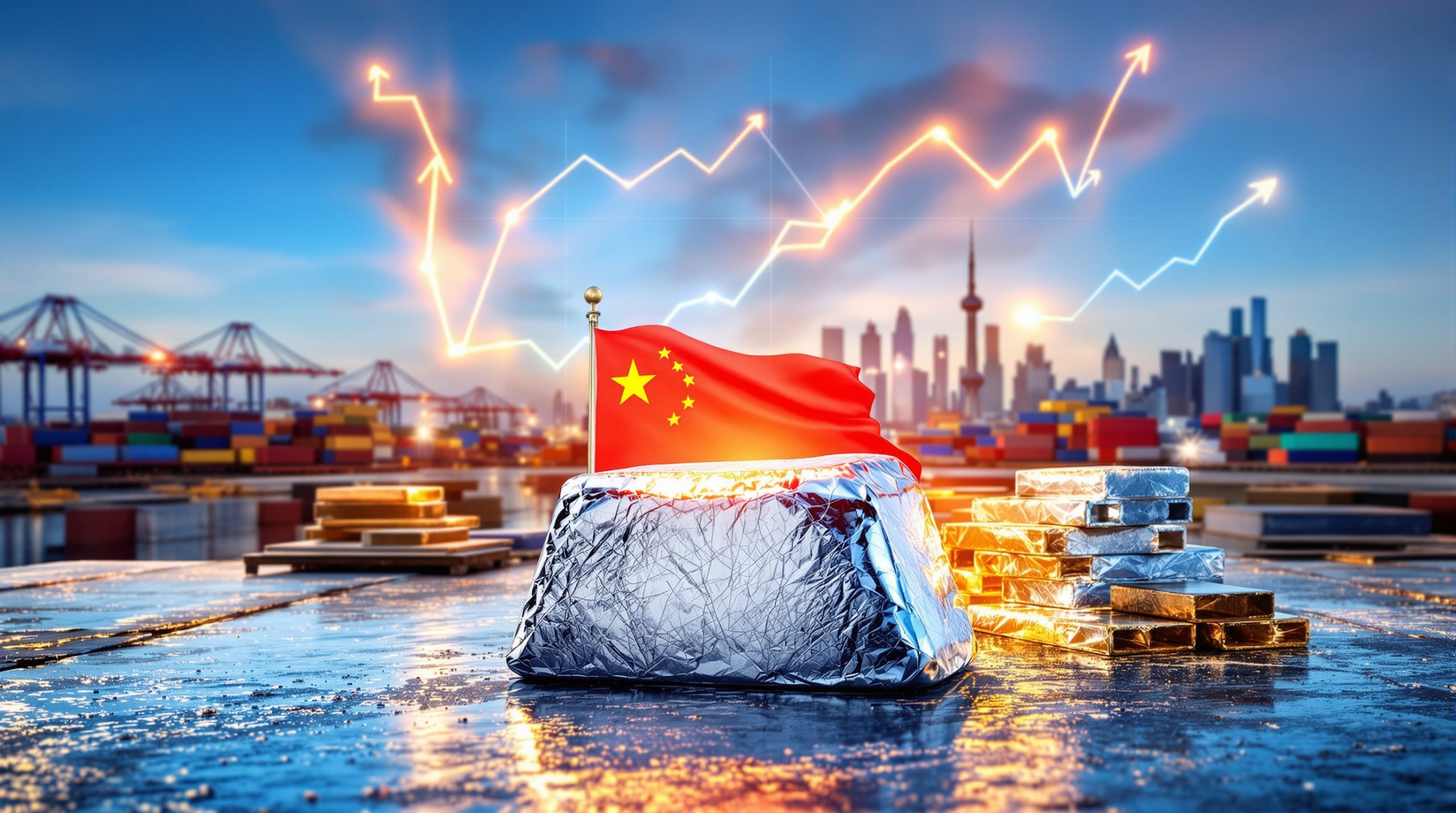Understanding Silver's Market Dynamics in 2023
Silver experienced notable price movements throughout 2023, with the metal averaging approximately $23.35 per ounce for the year. This represented a modest 0.8% increase from 2022's average of $23.16, reflecting a consolidation phase rather than the dramatic "silver price spike 2023" sometimes associated with this period. The precious metal traded within a range between $20.15 (February low) and $26.03 (May high), ending the year at $24.07.
This performance demonstrated silver's dual nature as both an industrial commodity and monetary asset, responding to a complex interplay of economic factors, industrial demand growth, and investment sentiment. While 2023 didn't deliver the explosive price action some anticipated, it established important technical foundations for the stronger moves that would follow.
How Did Silver Perform in 2023?
Throughout 2023, silver maintained a relatively defined trading range, primarily fluctuating between $22-$26 per ounce. The metal tested the important $26 resistance level multiple times during April-May but failed to sustain breakouts above this threshold. This price action represented characteristic base-building behavior rather than the volatile spikes silver is known for during bull market phases.
The final quarter showed strengthening momentum, with silver establishing higher lows and building support above the $23 level. This technical strengthening, while not immediately dramatic, laid crucial groundwork for the more substantial silver price influence that would follow in subsequent periods.
What Were the Key Price Milestones in 2023?
The year began with silver trading near $24, followed by a February pullback to the $20.15 range amid broader market uncertainty. Spring brought renewed strength, with silver climbing to challenge the $26 level by May—a significant resistance point dating back to previous market cycles.
Summer trading saw consolidation between $23-$25, with volatility decreasing as markets assessed economic data and Federal Reserve policy direction. By autumn, silver had established a stronger technical position, closing above its 200-day moving average and setting up the foundation for future advances.
This methodical price action throughout 2023 represented the early phase of what market technicians identify as a potential long-term bull market, with the metal building necessary support levels before attempting more ambitious upside targets.
What Drove Silver's Price Increase?
How Did Monetary Policy Impact Silver Prices?
The Federal Reserve's policy stance played a significant role in silver's market dynamics during 2023, though not through the immediate pivot some analysts had anticipated. After raising rates to a range of 5.25%-5.50% in July 2023, the Fed maintained this level throughout the remainder of the year, signaling the end of its aggressive tightening cycle but not yet initiating cuts.
This "hold" phase created a transitional monetary environment that partially supported precious metals. Markets began pricing in potential future easing, even as the Fed maintained its "higher for longer" rhetoric in official communications. By December 2023, Fed dot plots and forward guidance hinted at potential 2024 rate cuts, shifting market psychology toward a more metals-friendly outlook.
The anticipation of this policy inflection point, rather than actual rate cuts (which didn't materialize until September 2024), provided underlying support for silver market squeeze conditions during the latter part of 2023.
How Did Inflation Concerns Influence the Silver Market?
Inflation dynamics played a complex role in silver's 2023 performance. U.S. CPI had peaked at 9.1% in June 2022 but declined to 3.4% by December 2023, while core PCE (the Fed's preferred measure) registered 3.2% year-over-year in December 2023. This disinflation trend somewhat reduced immediate inflation-hedge demand for silver.
However, many investors remained concerned about longer-term inflationary pressures stemming from massive fiscal spending, supply chain restructuring, and geopolitical fragmentation. These structural concerns maintained a baseline of inflation-hedge interest in precious metals even as headline inflation figures moderated.
Importantly, silver's industrial component also responded positively to this inflation narrative, as materials-intensive green energy initiatives and infrastructure spending supported demand forecasts for the metal's manufacturing applications.
What Role Did the US Dollar Play?
The U.S. dollar showed mixed performance throughout 2023, starting the year at 103.27 on the DXY Dollar Index, reaching a peak of 107.05 in October, before closing at 101.34. This relatively range-bound dollar performance created neither strong headwinds nor tailwinds for silver prices.
During periods of dollar weakness, particularly in late Q4, silver demonstrated its inverse relationship with the currency, gaining some momentum as the greenback softened. This relationship remained an important factor, though not the dominant driver of silver's price action during 2023.
The currency effect was most notable in amplifying regional demand differences, with periods of local currency strength against the dollar making silver more affordable for industrial buyers and investors in Europe and developing economies.
Industrial Demand Factors
How Did Green Technology Drive Silver Consumption?
Record industrial demand emerged as a primary catalyst for silver's price appreciation in 2023, with photovoltaic (PV) applications leading consumption growth. According to the Silver Institute's World Silver Survey 2024, solar technology consumed 185.7 million ounces of silver in 2023, representing an 11.3% increase from 2022's 166.9 million ounces.
Solar panel manufacturing requires significant silver inputs for electrical contacts and conductive pastes, with each conventional panel containing approximately 20 grams of silver on average. As global solar installation capacity expanded dramatically to 444 GW in 2023—a 76% increase from 2022 levels—this created unprecedented demand pressure on silver supply deficits.
The photovoltaic sector alone accounted for approximately 35% of all industrial silver demand in 2023, making it the largest and fastest-growing industrial application. Despite ongoing efforts to reduce silver content per panel through "thrifting" technologies, the sheer volume growth in installations more than compensated for efficiency gains.
Solar Industry Silver Consumption (2021-2023)
| Year | Silver Used (Moz) | YoY Growth | % of Total Industrial Demand |
|---|---|---|---|
| 2021 | 113.7 | – | 23% |
| 2022 | 166.9 | 46.8% | 33% |
| 2023 | 185.7 | 11.3% | 35% |
What Other Industrial Applications Drove Demand?
Beyond solar technology, silver's unique properties made it essential for several high-growth sectors:
-
Electronics and Semiconductors: The electronics sector (excluding photovoltaics) consumed 70.6 million ounces in 2023, supporting applications in circuit boards, switches, and connectors. The continued expansion of 5G infrastructure, particularly in the Asia-Pacific region, maintained strong baseline demand.
-
Electric Vehicles: Global EV sales reached 13.6 million units in 2023, a 31% increase from 2022 according to the International Energy Agency. Each electric vehicle contains approximately 25-50 grams of silver (varying by vehicle type)—significantly more than conventional vehicles—in battery management systems, power electronics, and charging components.
-
Medical Applications: Silver's antimicrobial properties supported growing use in healthcare settings, particularly in wound dressings, medical instruments, and hospital surface coatings. This segment saw accelerated adoption following heightened awareness of infection control in the post-pandemic environment.
Total industrial demand reached 532.6 million ounces in 2023, representing approximately 48% of total silver demand and growing 5% from 2022 levels. This industrial component provided crucial support for silver prices beyond investment-driven factors.
How Did China's Demand Influence the Market?
China's industrial silver consumption growth represented one of the most significant regional demand stories of 2023, primarily driven by the nation's aggressive expansion of solar manufacturing capacity. As the world's leading producer of photovoltaic panels, China accounted for approximately 80-85% of global solar panel production.
Chinese solar installation capacity expanded dramatically in 2023, with the country adding 216.9 GW of new solar capacity according to the China National Energy Administration. This represented nearly half of global installations and created substantial demand pressure for silver inputs.
The concentration of this industrial demand in a single regional market created additional dynamics in physical silver flows, with notable premiums developing for silver deliverable to Chinese manufacturing hubs compared to Western markets.
Supply Constraints and Market Structure
What Happened to Silver Mine Production?
Global silver mine output reached 830.5 million ounces in 2023, representing a modest 1% increase from 2022's 822.4 million ounces according to the Silver Institute. This limited production growth occurred despite higher average prices, highlighting structural constraints in the supply pipeline:
-
Declining Ore Grades: Many established silver mines continued facing declining ore quality, a trend that has seen global average silver grades decrease 30-40% over the past 15 years. This required processing more material to yield the same amount of metal.
-
Project Delays: Several major expansion projects and new mines experienced permitting challenges, capital constraints, and technical difficulties. The average timeline from discovery to production for new silver mines spans 10-15 years, creating significant lag in supply response to price signals.
-
By-product Dynamics: Approximately 72% of silver comes as a by-product of other metal mining (primarily lead-zinc, copper, and gold). This meant production levels were influenced primarily by base metal economics rather than silver prices alone, limiting the supply response to silver-specific price increases.
Geographic production remained concentrated, with Mexico (23%), Peru (19%), and China (13%) accounting for over half of global output. Social and political factors in key producing regions, particularly in Peru, created additional uncertainty for supply forecasts.
How Did Physical Market Tightness Develop?
Physical silver markets showed increasing signs of tightness throughout 2023, particularly in major trading hubs:
-
Exchange Inventory Fluctuations: COMEX registered silver inventories (deliverable) fluctuated between 70-90 million ounces during 2023, while total COMEX inventories (registered + eligible) ranged from 280-320 million ounces. These inventory levels remained adequate for exchange operations but demonstrated less buffer than historical norms.
-
Premium Increases: Physical silver products commanded significant premiums over spot prices throughout 2023. American Silver Eagles averaged 30-50% premiums depending on market conditions, while even generic silver rounds typically traded at 10-20% premiums. These elevated premiums reflected strong retail demand combined with mint capacity constraints and distribution bottlenecks.
-
Regional Supply Disparities: Certain markets, particularly in Asia, experienced more acute physical tightness than North American or European centers, creating price differentials between trading hubs. These regional disparities occasionally created arbitrage opportunities for metal movement between markets.
The physical market dynamics in 2023 set the foundation for the more pronounced tightness that would develop in subsequent periods as both industrial and investment demand accelerated.
What Role Did Market Structure Play?
The unique structure of silver markets contributed to price behavior and amplified supply-demand imbalances:
-
Concentrated Positions: The relatively small size of the silver market compared to gold made it susceptible to large position influences. CFTC Commitments of Traders reports showed managed money (speculative) positioning in COMEX silver futures fluctuating between 10,000 to 45,000 net long contracts during 2023, creating periods of heightened volatility during position adjustments.
-
Futures Market Dynamics: The relationship between paper and physical markets created additional complexity. Silver futures open interest typically represented multiples of available physical metal, creating potential for disconnection between derivative pricing and physical reality during periods of stress.
-
Investment vs. Industrial Competition: Unlike gold, silver's dual nature created competing demands between investment and industrial sectors. Industrial users generally required physical delivery, while investment demand could be satisfied through various vehicles including derivatives, creating dynamic tension in how different price signals manifested.
This structural complexity meant that silver price movements often reflected multiple overlapping factors rather than simple supply-demand equations, contributing to the metal's characteristic volatility.
Investment Demand and Market Sentiment
How Did Retail Investment Influence Prices?
Retail investor interest in silver products remained robust throughout 2023, with several notable patterns:
-
Coin and Bar Demand: Physical silver investment reached 256.8 million ounces in 2023, representing a 2% increase from 2022's 251.6 million ounces according to the Silver Institute. This demonstrated resilient retail demand despite higher interest rates and competing investment opportunities.
-
Product Availability Patterns: U.S. Mint production of American Silver Eagles reached 24.8 million coins in 2023, down from 30.0 million in 2022, reflecting capacity constraints rather than demand limitations. Throughout much of the year, these official coins remained on allocation to authorized purchasers.
-
Premium Expansion: The premium over spot price for common silver products remained elevated throughout 2023. American Silver Eagles regularly commanded 30-50% premiums, while even generic silver rounds and bars traded at 10-20% over spot, reflecting strong retail demand against limited mint capacity.
-
Online Community Interest: Social media investment communities maintained focus on silver as an undervalued asset, though with less coordinated activity than during the 2021 "Silver Squeeze" episode. These communities continued highlighting silver's industrial applications and monetary history as rationales for accumulation.
This sustained retail demand represented approximately 23% of total silver consumption in 2023, providing important support for prices even as institutional investment patterns showed different trends.
What Was the Role of ETFs and Institutional Investment?
Institutional investment patterns for silver showed mixed signals in 2023:
-
ETF Holdings Decline: Global silver ETF holdings declined by 77.8 million ounces in 2023, representing outflows of approximately 13% of total holdings. This contrasted sharply with the robust physical bar and coin demand, highlighting the divergent behavior between institutional and retail investors.
-
Managed Money Positioning: CFTC data showed futures market positioning by speculative traders fluctuating throughout the year, with modest net long positioning predominating but lacking the extreme bullish positioning characteristic of major price advances.
-
Strategic Allocations: Some institutional investors began increasing precious metals allocations as portfolio diversifiers against economic uncertainty, though this trend remained in early stages during 2023 compared to the more substantial allocations that would develop later.
The combination of strong retail demand offsetting institutional outflows resulted in net investment demand of approximately 179 million ounces for 2023, according to Silver Institute data.
How Did Market Sentiment Evolve?
Market sentiment toward silver evolved significantly over the course of 2023:
-
Early Skepticism: The year began with relatively muted expectations for precious metals amid higher interest rates and apparent disinflation, with mainstream financial institutions forecasting modest silver prices averaging around $24-25 for the year.
-
Gradual Recognition: As industrial demand data emerged and monetary policy expectations shifted, sentiment gradually improved through the middle quarters, with increasing analyst recognition of silver's industrial demand growth story.
-
Year-End Momentum: By the final quarter, sentiment had turned decidedly more positive, with technical indicators like the convergence of 50-day and 200-day moving averages suggesting potential momentum shifts. Year-end analyst reports increasingly highlighted silver's potential for 2024.
This evolution in sentiment laid important psychological groundwork for future price appreciation, as market participants increasingly recognized the changing fundamental picture for silver despite the relatively modest price performance during 2023 itself.
Price Forecasts and Market Outlook
What Were the Expert Price Predictions?
Professional analysts offered a wide range of silver price forecasts during 2023:
-
Conservative Estimates: Some mainstream financial institutions projected modest appreciation, with Bank of America forecasting a $25 average for 2023 and Goldman Sachs projecting $24 in their January 2023 outlooks.
-
Middle-Ground Forecasts: Metals Focus, the Silver Institute's research partner, projected a $24.50 average for 2023, slightly above the actual $23.35 outcome.
-
Bullish Outliers: A smaller group of specialized precious metals analysts predicted potential moves toward the $30 level by year-end, citing structural supply deficits and monetary factors, though these targets weren't reached during the calendar year.
Most forecasts slightly overestimated 2023's actual performance, demonstrating the inherent challenges in predicting short-term price movements even with sound fundamental analysis.
What Technical Factors Influenced Price Movement?
Technical analysis considerations played an important role in silver's price action:
-
Key Resistance Levels: The $26 level represented significant psychological and technical resistance throughout 2023, having previously served as important support/resistance in prior years. Multiple tests of this level failed to produce sustained breakouts.
-
Moving Average Relationships: Silver's price relationship to key moving averages (50-day, 200-day) evolved throughout the year, with the metal trading below both averages during Q1, between them during Q2-Q3, and finally establishing position above both by Q4—signaling improving technical momentum.
-
Volume Patterns: Trading volume on COMEX silver futures averaged 60,000-90,000 contracts daily during 2023, with notable volume expansion during attempted breakouts above $25, indicating genuine market interest in these technical levels.
The technical picture gradually improved throughout 2023, establishing the necessary conditions for stronger price action once fundamental catalysts emerged to drive the market above established resistance levels.
How Did Geopolitical Factors Impact Silver?
Several geopolitical developments influenced silver market dynamics in 2023:
-
Russia-Ukraine Conflict: The ongoing war created broader commodity market disruptions and heightened geopolitical risk awareness, supporting precious metals as portfolio hedges.
-
U.S. Banking Stress: March 2023 brought significant stress in the U.S. regional banking sector with the failures of Silicon Valley Bank and Signature Bank, temporarily boosting safe-haven demand for precious metals.
-
Middle East Tensions: The outbreak of the Israel-Hamas conflict in October 2023 increased geopolitical risk premiums across precious metals markets.
-
U.S. Debt Ceiling: The resolution of the U.S. debt ceiling crisis in June 2023 temporarily reduced immediate systemic risk perceptions but highlighted growing fiscal challenges.
These events created periodic volatility in silver prices throughout the year, though their impacts proved transitory rather than establishing sustained price trends.
Long-Term Implications of the 2023 Price Action
What Did 2023's Price Movement Signal for Future Markets?
The silver price action in 2023 established several important precedents for future market behavior:
-
Supply Response Lag: The modest price increases highlighted the significant time required for mining supply to respond to higher prices. With 7-16 years typically needed from discovery to production for new silver mines, 2023's price environment began incentivizing exploration but couldn't trigger immediate production increases.
-
Structural Demand Growth: The acceleration of green technology adoption demonstrated silver's growing industrial importance beyond traditional applications. The 11.3% growth in photovoltaic demand reinforced silver's critical role in energy transition technologies.
-
Investment Awareness: Increased mainstream recognition of silver's dual monetary and industrial roles expanded the potential investor base, with more market participants beginning to understand the metal's unique positioning compared to both gold and industrial metals.
These developments, while not producing dramatic price movements within 2023 itself, laid crucial groundwork for the supply-demand imbalances that would drive future market dynamics.
How Did the Supply-Demand Balance Evolve?
The fundamental supply-demand relationship for silver underwent significant evolution in 2023:
-
Market Deficit Continuation: The silver market recorded a 94.8 million ounce deficit in 2023 according to the Silver Institute, representing the third consecutive annual deficit following 2021's 51.8 million ounces and 2022's 237.7 million ounces.
-
Inventory Implications: This sustained deficit began drawing down above-ground inventories, with identifiable stocks in ETFs and exchanges estimated around 1.1-1.2 billion ounces globally by year-end 2023.
-
Recycling Response: Higher prices began stimulating increased recycling activity, which reached 172.8 million ounces in 2023 (approximately 15% of total supply). However, this response remained insufficient to balance the market without drawing down existing inventories.
The persistence of market deficits, even during a period of relatively modest prices, suggested structural imbalances that would require either significantly higher prices or demand destruction to resolve in coming years.
What Were the Investment Lessons from 2023?
The silver market in 2023 offered several valuable lessons for investors:
-
Patience Requirement: The extended base-building period before significant price appreciation demonstrated the need for investor patience with silver positions. The metal's consolidation throughout much of the year reinforced that timing market entries and exits remains challenging.
-
Volatility Management: Even during a relatively range-bound year, silver demonstrated its characteristic volatility, with multiple 10%+ price swings. This reinforced the importance of appropriate position sizing and risk management when approaching silver investments.
-
Physical vs. Paper Divergence: The significant premiums for physical products compared to spot prices highlighted the potential for divergence between different silver market segments. Investors learned to differentiate between paper price dynamics and the realities of acquiring physical metal.
These lessons proved particularly valuable for investors navigating subsequent market periods, as they established realistic expectations for silver's behavior during different market phases.
FAQ: Silver Price Movement in 2023
Will silver prices continue rising after the 2023 base-building?
While specific price predictions remain inherently uncertain, the fundamental factors that supported silver in 2023—including industrial demand growth, monetary policy evolution, and supply constraints—created structural support for continued strength. The market established important technical momentum by year-end that carried forward into subsequent periods.
Several analysts noted that the combination of sustained market deficits and improving technical patterns suggested potential for higher prices in 2024 and beyond, contingent on broader economic conditions and monetary policy developments.
How did silver perform compared to gold in 2023?
Silver typically exhibits higher volatility than gold, and 2023 was no exception. While both precious metals saw modest appreciation in 2023, silver's performance was comparable to gold's on a percentage basis. The gold-silver ratio insights (the number of silver ounces required to purchase one gold ounce) fluctuated between 77 and 87 during 2023, remaining elevated by historical standards.
This relatively high ratio suggested potential for silver outperformance in future bull market conditions, as the ratio typically contracts during precious metals uptrends—a pattern observed in subsequent market periods.
What impact did central bank policies have on silver prices?
Central bank policies, particularly the Federal Reserve's transition from aggressive tightening to a holding pattern, influenced silver market psychology in 2023. The Fed's final rate hike in July 2023 to a range of 5.25%-5.50% marked an important inflection point, after which markets increasingly focused on the timing of potential future cuts.
While actual rate reductions wouldn't materialize until September 2024, the psychological shift toward anticipating monetary easing rather than further tightening provided support for precious metals prices, particularly in Q4 2023.
How did physical silver premiums behave during 2023?
Physical silver premiums (the amount over spot price paid for coins and bars) remained elevated throughout 2023, indicating strong retail demand and periodic supply chain constraints. American Silver Eagles typically commanded 30-50% premiums over spot prices, while even generic silver rounds traded at 10-20% premiums throughout most of the year.
These elevated premiums reflected several factors: continued strong retail demand, mint production limitations, and distribution bottlenecks. The persistence of high premiums demonstrated that real-world physical acquisition costs remained significantly above the paper spot price throughout the period.
What role did industrial demand play in 2023's silver market dynamics?
Industrial demand, particularly from solar panel manufacturing, electric vehicles, and electronics, played a central role in silver's market fundamentals. The 5% growth in total industrial consumption (reaching 532.6 million ounces) created significant pressure on available supplies, especially as this coincided with relatively constrained mine output growing at just 1%.
The photovoltaic sector's 11.3% demand growth stood out as particularly significant, consuming 185.7 million ounces and accounting for approximately 35% of industrial silver demand. This growth trajectory highlighted silver's increasing importance in green energy technologies and suggested continued structural support for the metal.
Want to Capitalise on the Next Major Mineral Discovery?
Discovery Alert's proprietary Discovery IQ model identifies significant ASX mineral discoveries in real-time, providing actionable insights that could give you a crucial edge in the market. Understand why historic discoveries like De Grey Mining and WA1 Resources generated substantial returns by visiting Discovery Alert's dedicated discoveries page.




